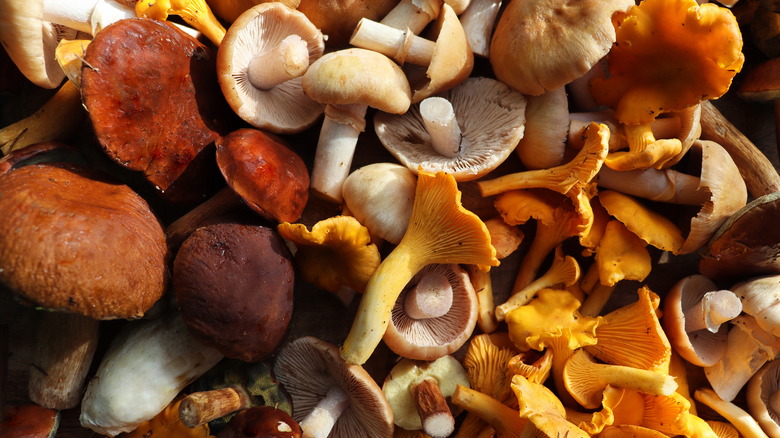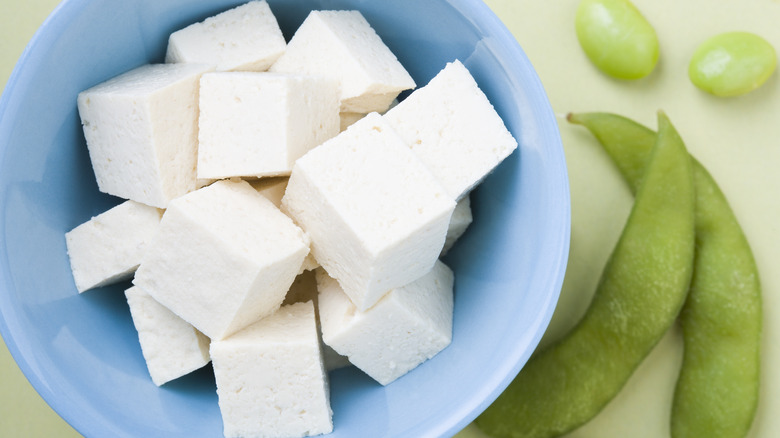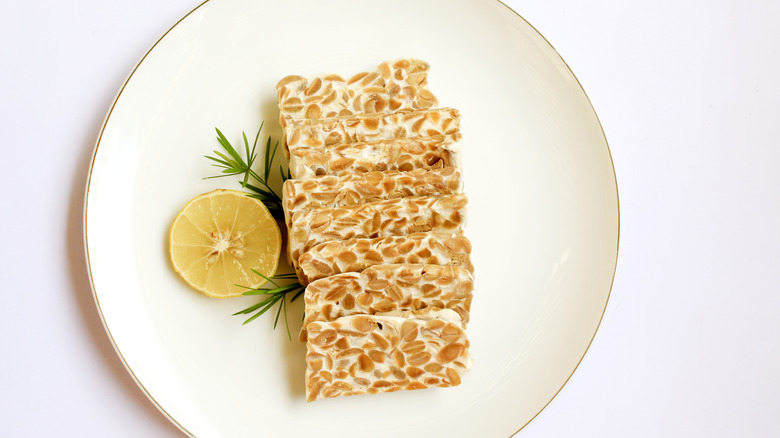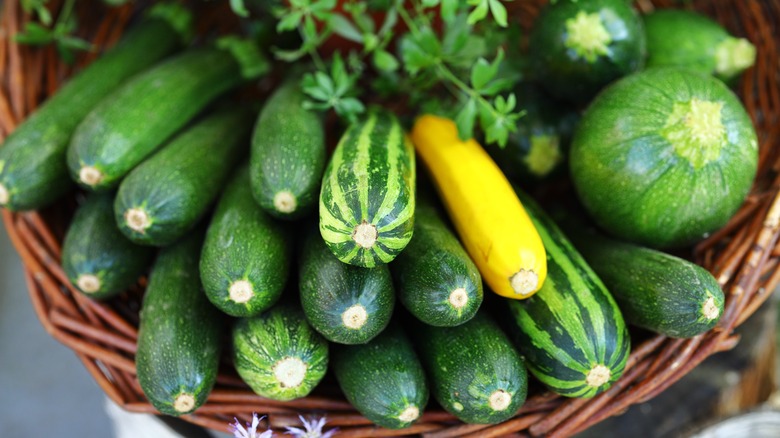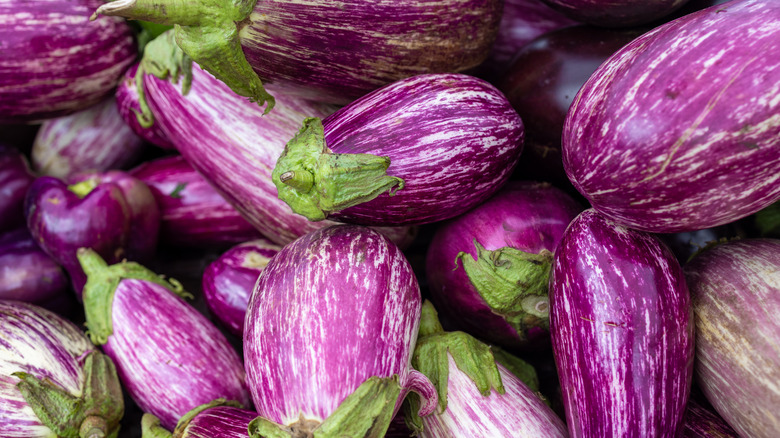4 Easy Substitutes For Mushrooms In A Recipe
There's a moment of fear when reading a recipe: "Do I have everything? Will everyone like it? What if...?" Maybe you haven't experienced that, but many people certainly do have a moment of anxiety before cooking a new dish, wondering if they have each component to create something everyone will love. If you're cooking with mushrooms, and they either went bad in the fridge (it happens) or you have a guest who loathes their texture and taste, don't fret. There are many, many substitutions that are completely acceptable for your dish that can still do justice to the missing fungi.
Mushrooms, regardless of variety, are earthy; the ultimate umami food — rich, meaty, and savory. Their textures vary based on the type. Whereas a porcini or portobello may be thicker and meatier, a morel (also known as Molly Moocher in West Virginia) is spongey and soft, a chanterelle is delicate, and an enoki is crunchy and eats like bean sprouts. All that said, depending on what dish you're making, there are plenty of acceptable stand-ins for the mushrooms in your recipe.
Tofu for noodle dishes, broths, and stews
Probably one of the best substitutes for mushrooms is tofu, which is made from fermented soy beans in a process similar to that of making cheese. Tofu's spongey texture is extremely reminiscent of fresh mushroom flesh. There are numerous types of tofu, so you can easily tailor your substitution based on the type of mushroom versus the type of tofu. For example, a super firm tofu would work beautifully in place of a portobello mushroom. A slightly softer one could work for a delicate maitake or shiitake mushroom.
Unlike mushrooms, though, tofu doesn't bring much of its own flavor to the dish you're creating. Mushrooms present a rich umami and earthy vibe, whereas tofu is relatively bland. However, that gives you, the chef, an opportunity to flavor as desired. In a swap for a ramen or mushroom soup, tofu will simply absorb the other spices and flavorings you add, so it's great in dishes with lots of other components.
Tempeh for braising or stir frying
Like its cousin tofu, tempeh is another soy-based product that stands in well for your mushroom recipes. Tempeh is pretty different from tofu, though. Whereas tofu is created like cheese, by coagulating soy milk until it separates into whey and curds; tempeh is made from the soybeans themselves, and then mashed and packed into a sort of pressed cake. It's nutty and has a significant chew with a lot more texture than tofu. It's less cheese and more nut loaf in a way.
Tempeh, though, can stand in for mushrooms for the fact that, unlike tofu, it does have its own umami-rich flavor — much like a mushroom. Because the texture is less wet like a tofu and more nutty, it can be crumbled into stir fries and sauté applications where you would dice or mince chanterelles, oyster mushrooms, or even morels.
Zucchini for sautéed dishes
In the summer, if you're a gardener, you're inevitably faced with the annual problem of too much zucchini. The giant squash-like vegetables inundate refrigerators, countertops, and produce shelves — begging for recipes where their traits can shine. The good news is that yet another way to use up the abundance is to substitute zucchini for mushrooms in your recipes — especially ones where you're stir-frying or sautéing.
It may seem like an odd choice, but zucchini works like tofu in that it absorbs the flavor of what you cook it in and with. Unlike tofu, though, zucchini brings its own flavor, too, albeit a mild one. It's slightly sweet, a little crunchy, and a little earthy — similar to some mushrooms. Once you sauté it, zucchini will be a little less chewy than a sautéed mushroom but will have a similar bite to it. As a bonus, zucchini is also extremely hydrating and carries a multitude of good-for-you vitamins and minerals, like vitamins A and C as well as antioxidants.
Eggplant for quick-cooking dishes
The big, bulbous purple fruit — yes, eggplant is technically a fruit — is another good swap for mushrooms in your recipe and comes in a variety of sizes, so you can easily tailor your needs as it relates to your substitution without much food waste. However, eggplant would be best in a quick-cooking application, not a long-simmering soup or something broth-based. Eggplant has a mild flavor and a sort of spongey texture — not unlike a firmer mushroom.
Use eggplant as a swap in a one-for-one ratio, and don't cook it for too long or else it'll start to fall apart. Like zucchini, eggplant as a swap has its benefits, too. The fruit has been shown to help aid in blood pressure management and heart health. It also is extremely high in fiber, which can promote weight loss by helping you feel full for longer.
